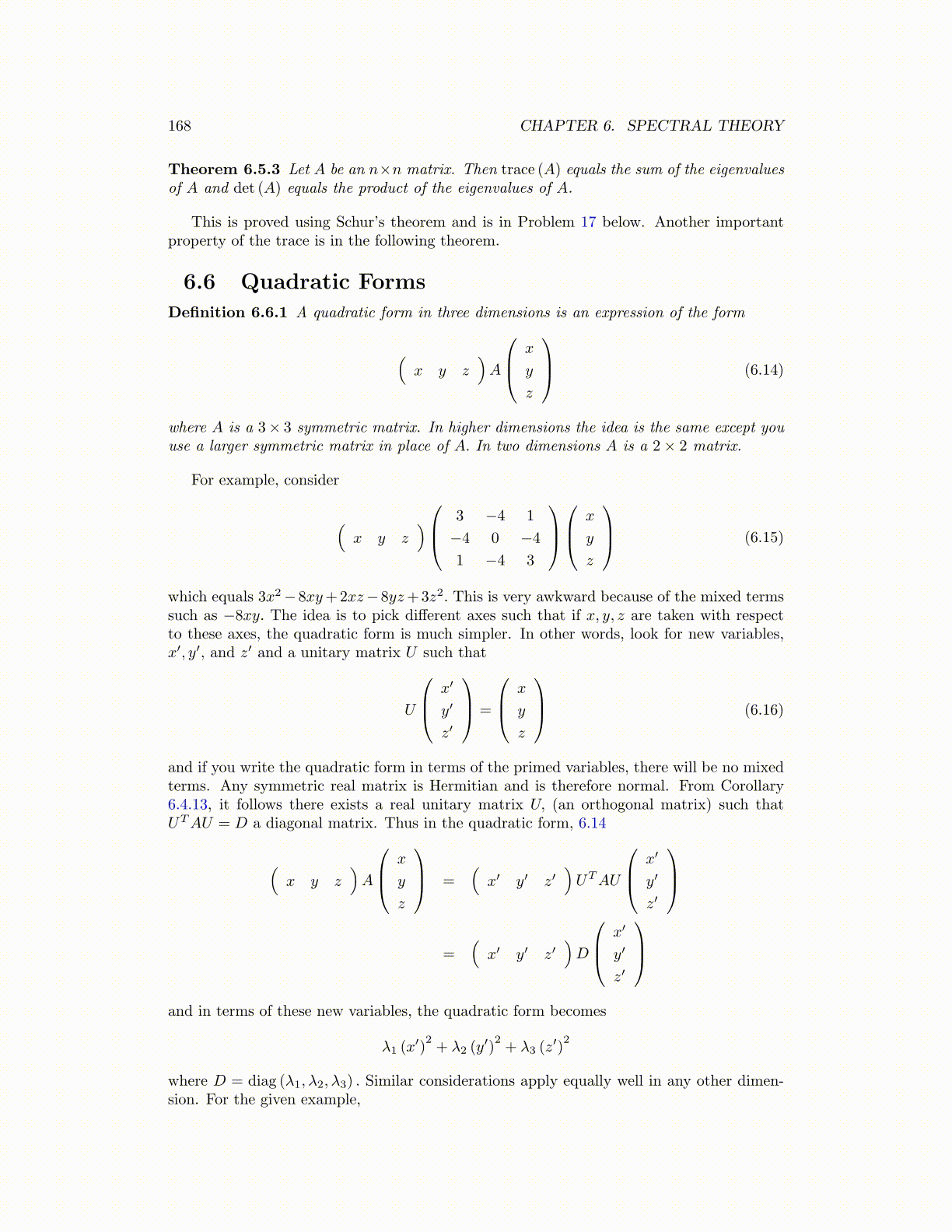
168 CHAPTER 6. SPECTRAL THEORY
Theorem 6.5.3 Let A be an n×n matrix. Then trace (A) equals the sum of the eigenvaluesof A and det (A) equals the product of the eigenvalues of A.
This is proved using Schur’s theorem and is in Problem 17 below. Another importantproperty of the trace is in the following theorem.
6.6 Quadratic Forms
Definition 6.6.1 A quadratic form in three dimensions is an expression of the form
(x y z
)A
x
y
z
(6.14)
where A is a 3× 3 symmetric matrix. In higher dimensions the idea is the same except youuse a larger symmetric matrix in place of A. In two dimensions A is a 2× 2 matrix.
For example, consider
(x y z
) 3 −4 1
−4 0 −4
1 −4 3
x
y
z
(6.15)
which equals 3x2−8xy+2xz−8yz+3z2. This is very awkward because of the mixed termssuch as −8xy. The idea is to pick different axes such that if x, y, z are taken with respectto these axes, the quadratic form is much simpler. In other words, look for new variables,x′, y′, and z′ and a unitary matrix U such that
U
x′
y′
z′
=
x
y
z
(6.16)
and if you write the quadratic form in terms of the primed variables, there will be no mixedterms. Any symmetric real matrix is Hermitian and is therefore normal. From Corollary6.4.13, it follows there exists a real unitary matrix U, (an orthogonal matrix) such thatUTAU = D a diagonal matrix. Thus in the quadratic form, 6.14
(x y z
)A
x
y
z
=(x′ y′ z′
)UTAU
x′
y′
z′
=
(x′ y′ z′
)D
x′
y′
z′
and in terms of these new variables, the quadratic form becomes
λ1 (x′)2+ λ2 (y
′)2+ λ3 (z
′)2
where D = diag (λ1, λ2, λ3) . Similar considerations apply equally well in any other dimen-sion. For the given example,